London’s adopted son reveals the depth beneath his delicate layers
Text by Katia Ganfield
Portraits by Henrik Knudsen & Photography by Olivia Beasley
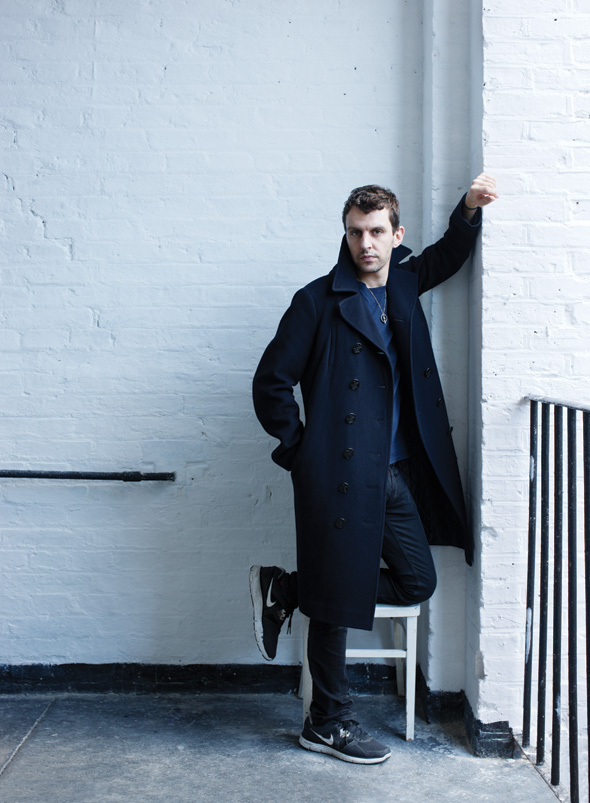
Greco-Austrian designer, Marios Schwab, is a designer of such caliber there is little need for introductions. Winning Best New Designer in 2006 and the Swiss Textile Award in 2007, he has been an important part of the fashion industry for years, with his work favored among celebrities such as Kate Moss, Kylie Minogue and Chloë Sevigny.
After graduating with distinction from the largely influential Esmod fashion school in Berlin, he moved to London in 2003 to complete an MA in Womenswear at Central Saint Martins. Only two years later, Schwab launched his own label, which started showing at London Fashion Week in 2007. He recently showed his Autumn/Winter 2012 collection at London Fashion Week and has a new line launching in September.
Can you tell us a little bit about your latest collection and the inspirations behind it? I was listening to a composition by Gustav Mahler and my mind filled up with characters and imagery for the collection… it was very spontaneous. It was similar to last season’s inspiration but this time more developed in the sense of layering and textures. I started experimenting with different ways of how you can incorporate a natural formation and played with different ways of looking at necklines, constructing them with graphic elements. It’s very alien-like, but at the same time in sync with nature. I like this way of starting with something enigmatic and creating with it a story that meets fabric, cut and color. I think it’s a very personal way of incorporating the personality of a woman and when I was growing up and getting into fashion it was their anonymity that fascinated me.
What is it about a woman’s anonymity that fascinates you? The first encounter with a woman is always influenced by the way she dresses. That’s why I decided to start the show with a mysterious woman wearing a hat, where you only catch glimpses of her hair but you instantly fall in love with her because of her dress sense. I wanted to create this essence by making something almost parallel to her skin, so the body becomes a part of the breast with the neckline taking a very amorphous shape that’s like her collar bone. It’s this biomorphic cut that filters throughout the collection. It’s all inspired by spirographs and harmonographs—things I was very much drawn to as a kid. I kept drawing curvy lines instantaneously; I didn’t have to think about it. It was all about the curve.
Who is the woman that most inspired you for this collection?The last chapter of Marlene Dietrich’s career mainly inspired the end of the show. She has such a fascinating persona, an incredibly lonely character that was very particular and such a perfectionist, especially with her clothes and how they were executed. She was a bit of a femme fatale. I show personality through my garments by layering, craftsmanship and optical illusions, which create depth. This is very much like her—a woman full of layers and a cluster of personalities that come together.
How important is craftsmanship to your work? It’s the ultimate obsession; it’s what makes me who I am. I like to sit down with fabric that I just received from a manufacturer and completely change its appearance by applying something that is thought-out but also organic. I like to educate myself through that, learning different techniques and ways of doing things. I think it’s important to be close with a product and apply to it a sense of personality, where at the end of the day you can see that it’s not just another mass-produced product.
Who initially inspired you to start designing? In my family, we have very strong personalities, like my mum and my auntie. It might sound stereotypical but my mum was very eclectic in the way she would be taking fabric and making it her own by changing the appearance of it. Later on I travelled quite a lot to Austria and Germany with her, learning about different characters, culture and ways of dressing that were different to my Greek upbringing. Greek woman are very mystical and the color black is such a perfect color to wear in Mediterranean countries because it’s a color linked to emotions and to history. In a sense that’s something I always like to use in the collections because black needs perfection in the silhouette and in the cut in order to make sense.
Are your parents supportive of your chosen career path? They are very supportive. My mum is still very creative and opinionated. She comes to all the shows and tells me what she likes and what she doesn’t. My dad is more business-like and asks me the non-creative questions. Thankfully they allowed me to follow my passion from a very early age. I left home at age 15 and started working in fashion.
You also worked as a Creative Director at Halston alongside Sarah Jessica Parker. What was that like? It was incredible, a huge learning curve and amazing to be linked to such a notorious brand. It’s linked to such an infamous time in fashion, it wasn’t only about fashion itself, it was also how the music and political situations made people exaggerate in a way that probably nowadays is impossible. The extravagance of that time made such a huge difference in the way you would present yourself. It was an incredible experience to be able to travel to America so often and so I was very happy to be able to do that. Obviously it was very hard to manage two labels without any design team; I was the only designer for both collections.
What did you take away from working there? It helped my confidence, as I was scared I couldn’t manage without a design team underneath me. I was proud to be able to balance both and to have met all these incredible creatives such as George Cortina, who helped me so much the days before the show. There’s such an incredible energy to New York.
You briefly touched on Halston’s influence on a certain time in fashion. What are your thoughts on the current state of the fashion industry? It’s getting better. The industry is getting less arrogant, which is good because it’s very important to be aware of reality, and I certainly like to think a lot about what’s happening around me. The process of making garments is very important to encourage the industry to be more pragmatic about where we’re standing at the moment and how we can promote fashion in a different way. People don’t have to look at celebrities to realize what they want. It should be more about personality and their own way of being opinionated. That’s why London is so important at the moment—because it’s a breeding ground of new ideas and people are not scared of creating something that’s different.
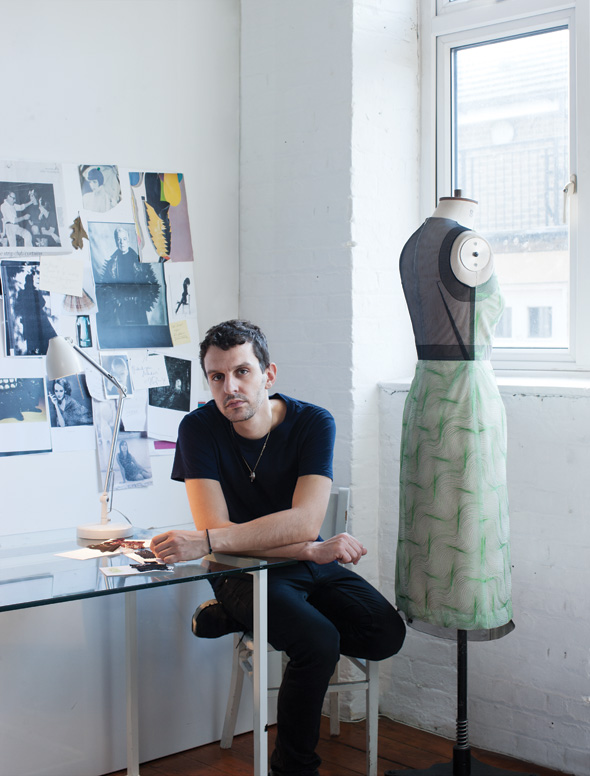
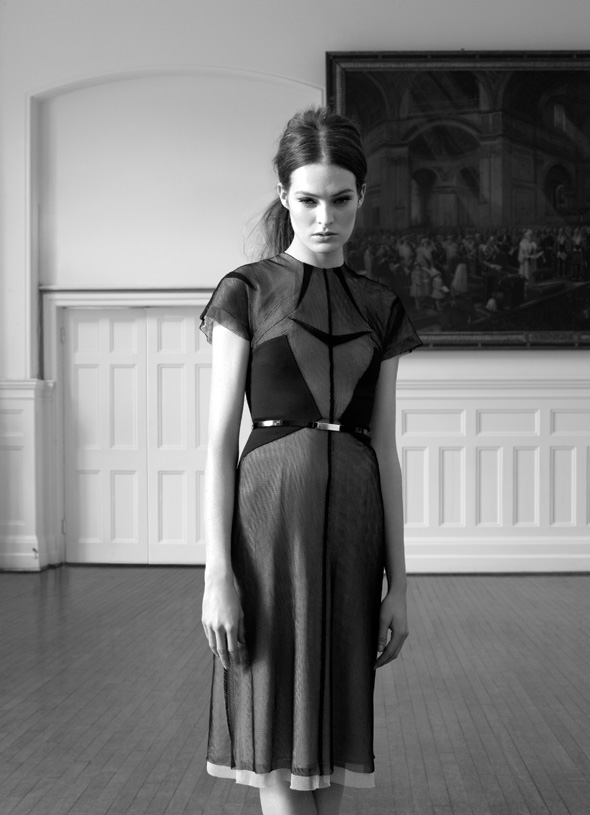
Black and pink fine mesh paneled dress with patent belt by Marios Schwab
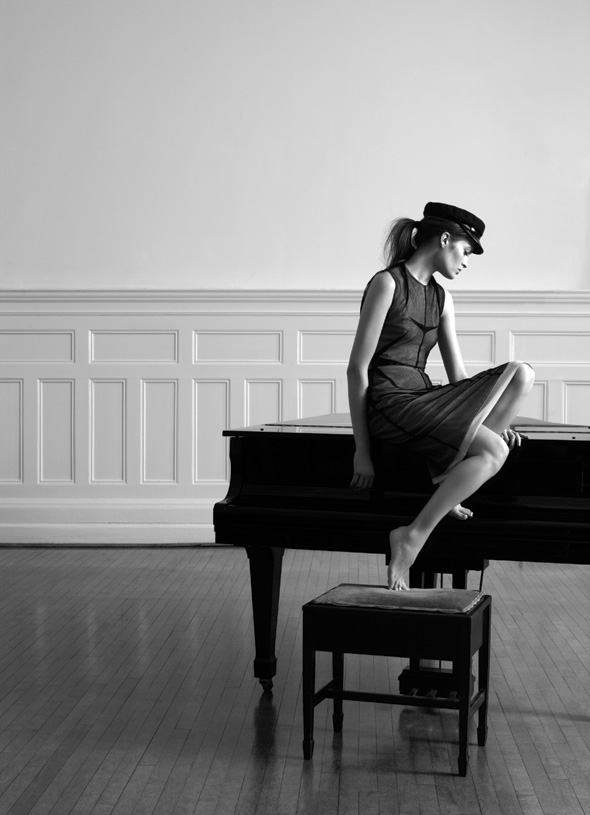
Black and mint fine mesh paneled tank top and a skirt with patent belt detail, with wool cap by Marios Schwab
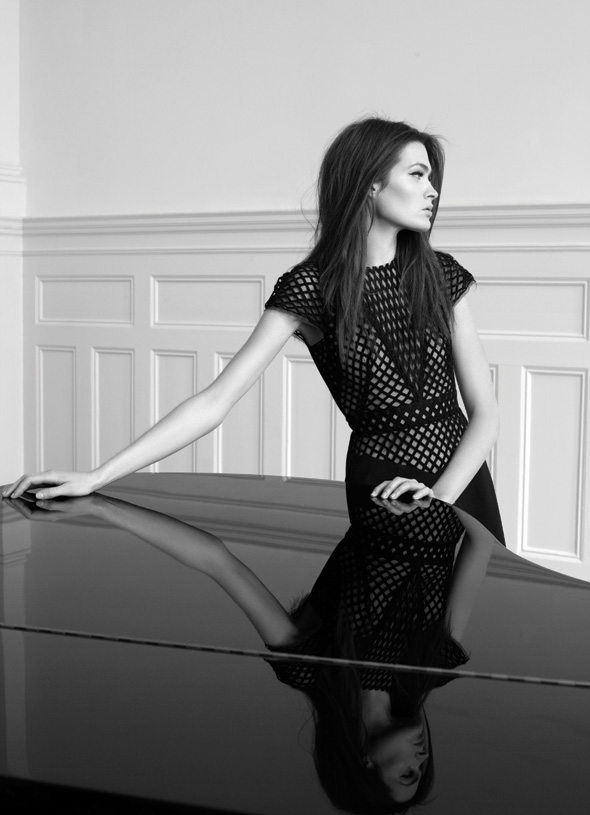
Black mesh paneled cocktail dress by Marios Schwab
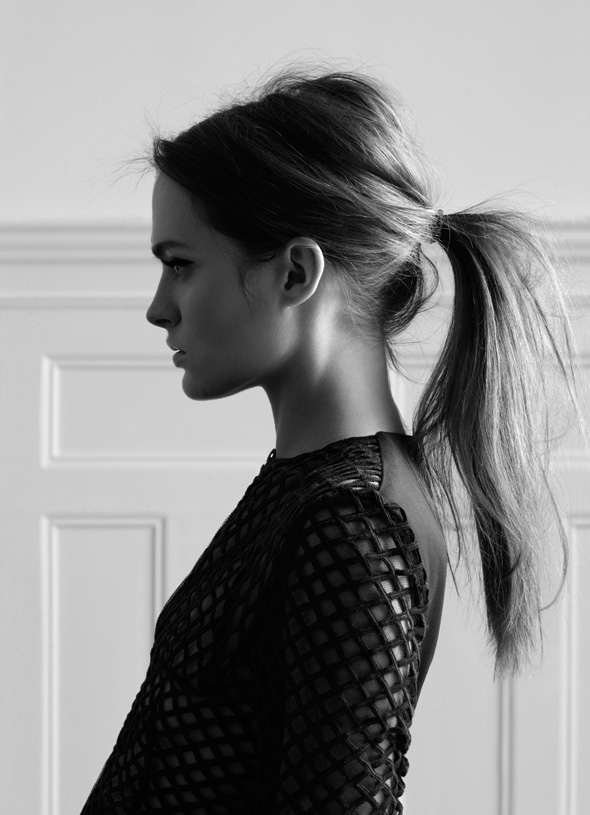
Long sleeved cropped mesh jacket with heavy zip front fastening by Marios Schwab
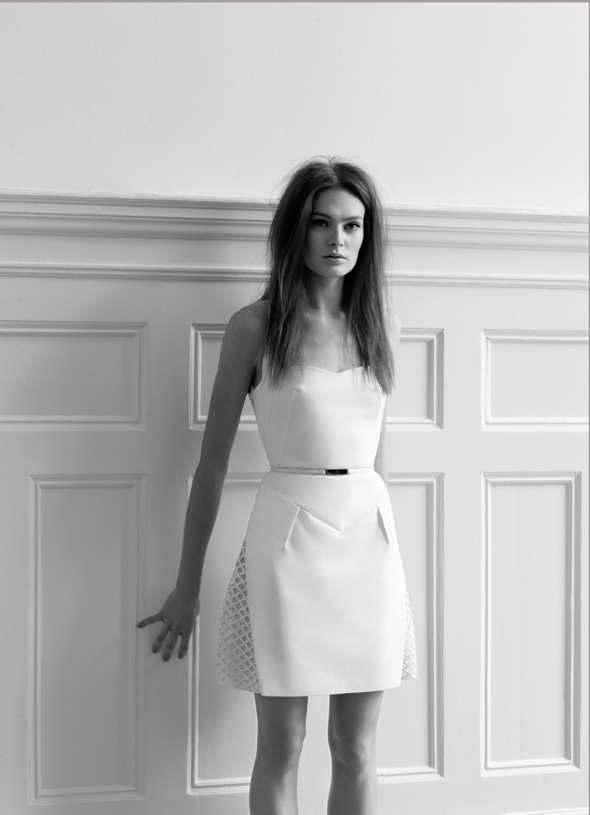
White mesh paneled A-line dress by Marios Schwab
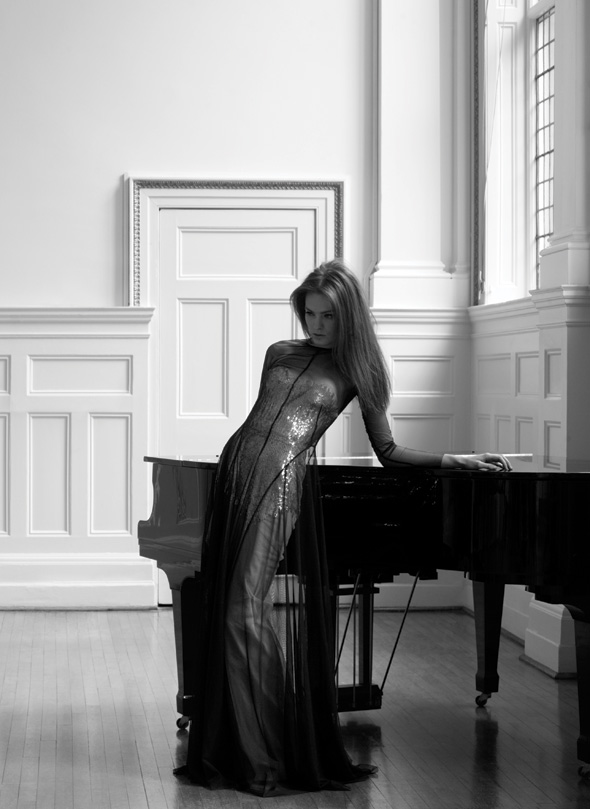
Floor length black tulle-and-sequin layered dress by Marios Schwab
Stylist Georgina Hodson at georginahodson.com
Makeup Lyz Marsden at The Book Agency using Chanel and Hydra Beauty Serum
Hair Elliot Bssila at Rossano Ferretti Hair Spa using Shu Uemura
Assistant Tim Bowditch

